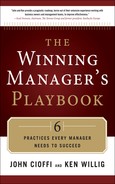Low cost
Being a company that offers a low price (the price tag to the customer) is rather easy—at least for a short while. You can drop your prices to very low levels anytime you’d like. If you do it to clear out slow-moving merchandise, you might call it a clearance sale. If you try to do this indefinitely, it might be financial suicide. The real trick of a low-cost company, then, is to offer low prices indefinitely, still make a profit, and keep doing it over and over again, day after day. To do this, you must first obtain your own products or services at low cost (the price tag to you).
People frequently think of Wal-Mart or Costco as low-cost companies. And indeed they are—they have enormous purchasing power, which they use to negotiate low-cost products from their suppliers (whether these firms can consistently and profitably offer low-cost products to Wal-Mart is another story).
Low cost firms have a few things in common. We’ve already seen one of them: large purchasing power, which is needed to obtain products from suppliers at consistently low costs. A small firm, lacking such purchasing power, typically cannot obtain goods at these low costs.
Here are some other common characteristics of low-cost firms:
- Operations are standardized (avoiding expensive customized activities).
- Operations are focused on avoiding errors (errors cost money).
- Operations are measured and managed carefully (to increase efficiency).
- Management is strongly centralized (to maintain consistency).
- Products/services are aimed at the mass market (most of the customers are here).
- Employees have very clear jobs, goals, and boundaries (to maintain control).
The irony here is that lowering prices is easy, while making a profit is not. Company owners and managers very frequently lower their prices when seeking to grow their firms, and this often works. They get more sales. The difficult thing to do is to get more sales and still make a profit.
For example, it is virtually impossible for a relatively small firm to acquire the purchasing power of a very large firm. (Joining a co-op or buying group may help reduce costs, although the costs generally are the same for all similar-size co-op members.) Thus, the costs incurred by the small firm will make it more difficult for the firm to make a profit, relative to a large firm, if the small firm tries to sell its goods at the same price.
Additionally, it requires significant dedication and focus to create the processes, discipline, and culture to drive down costs relentlessly. In fact, virtually every dimension of the firm must reflect this generic low-cost strategy if it is to be successful.
The centralized management team must standardize operations to drive down day-to-day costs and avoid errors that add to costs. They must closely manage the employees to ensure that they do exactly what is expected, and they must constantly measure and manage the details of the operations to gain incremental improvements through time. They also must choose the firm’s customers carefully, focusing on those who are not highly demanding, but rather are happy with the firm’s existing offerings (no custom stuff).
This low-cost firm is, overall, a very tightly and centrally managed operation, with the people to match the culture. Like the Olympic high jump, not everyone can do it. But we know that some can, and we know that they can become very successful.
